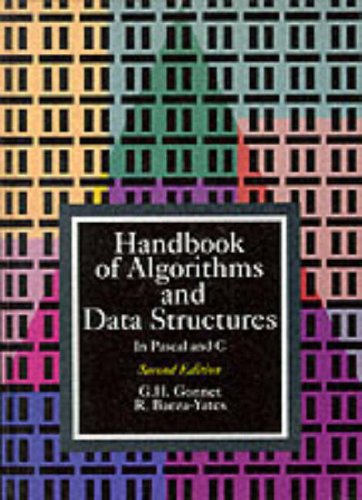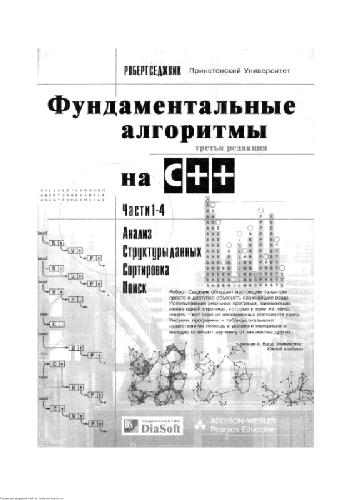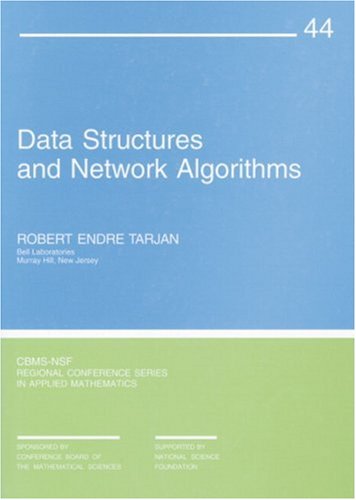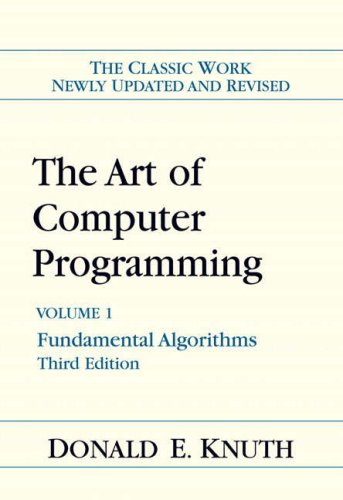Susan Douglas, Korry Douglas0764571737, 9780764571732, 9780764577536
Table of contents :
Team DDU……Page 1
Table of Contents……Page 10
Saving Time with This Book……Page 20
Part I: Making the Desktop Work for You……Page 21
Part IX: Backing Up Means Never Having to Say You’re Sorry……Page 22
Icons Used in This Book……Page 23
Part I: Making the Desktop Work for You……Page 24
Discovering Your Protocols……Page 26
Working with CD Audio Tracks Using audiocd:……Page 27
Managing Snapshots with the camera: Protocol……Page 28
Getting Help with help:, info:, and man:……Page 29
Other KDE Protocols……Page 30
Using GNOME VFS Modules……Page 32
Working with Packages: rpm and rpms……Page 34
Skinning Your Desktop with VFS……Page 36
Classifying Data with MIME……Page 37
Creating KDE File Associations……Page 38
Creating New MIME Types with GNOME……Page 39
Making Basic Prompt Transformations……Page 42
Adding Dynamically Updated Data to Your Prompt……Page 43
Colorizing Your Prompt……Page 45
Seeing a Red Alert When You Have Superuser Privileges……Page 46
Saving Your Work……Page 47
Completing Names Automatically……Page 49
Using the Escape Key to Your Advantage……Page 50
Customizing Completion for Maximum Speed……Page 51
Using cd and ls to Navigate through bash……Page 53
Setting Your CDPATH Variables to Find Directories Fast……Page 54
Manipulating Your Stack with dirs……Page 55
Technique 7: Typing Less and Doing More with Handy Automagic Variables……Page 57
Streamlining Archive Searches……Page 58
Turning the Output of a Command into a Variable with $( )……Page 59
Using $UID and $EUID in Shell Scripts……Page 60
Getting Quick Access to Programs with $PATH……Page 61
Customizing Variables for Rapid Transit……Page 62
Finding the Right Shell Script……Page 64
Timing is everything……Page 65
Cleaning up made easy……Page 66
Customizing Your Autostart File……Page 67
Scrolling……Page 69
Searching through history……Page 70
Filtering the history list……Page 71
Executing Commands Quickly with History Variables……Page 72
Viewing Your Aliases……Page 74
Creating Simple Timesaving Aliases……Page 75
Using Aliases for Complex Commands……Page 76
Automatic downloading……Page 77
Monitoring Your System in a Snap……Page 78
Un-tarring the Easy Way……Page 79
Part II: Getting the Most from Your File System……Page 82
What Is Samba?……Page 84
Enabling Samba……Page 85
Adjusting the workgroup name and creating user accounts……Page 86
Giving a Windows machine access to your home directory……Page 87
Sharing Linux printers with SWAT……Page 88
Using a Windows printer from Linux……Page 89
Plugging In to Remote Data with Linux Programs Quickly……Page 90
Finding Files with locate……Page 92
Finding Files with find……Page 93
Adding time-based qualifications……Page 94
Filtering by file size……Page 95
Perusing commonly used qualifications……Page 96
Cracking open a file’s info with -ls……Page 97
Checking disk usage by user……Page 98
Executing commands with find……Page 99
Building Complex Commands with xargs……Page 100
Creating Archives with File Roller……Page 101
Inspecting and Extracting Archives with File Roller……Page 103
Building archives from the command line……Page 104
Uprooting Entire Directory Trees with scp……Page 105
Splitting Big Files into Manageable Chunks……Page 106
Building Software from Downloaded tarballs……Page 107
Downloading and compiling SuperKaramba……Page 108
Mirroring sites with wget……Page 110
wget’s optional flags……Page 111
Downloading and Uploading with curl……Page 112
Choosing the ADIOS Version of User Mode Linux……Page 113
Downloading ADIOS……Page 114
Installing ADIOS……Page 115
Finding Your Way around UML……Page 116
Installing Software into UML……Page 117
Merging Changes to Your Prototype……Page 118
Part III: Good Housekeeping with Linux……Page 120
Technique 16: Red-lining RPM Queries……Page 122
Querying RPM Packages for Content……Page 123
Creating a Package Index……Page 124
Don’t Put That in Your Drive; You Don’t Know Where That’s Been!……Page 125
Dissecting an RPM Package……Page 127
Using RPM at the Command Line……Page 128
Quick installations from distribution media with Fedora’s Package Manager……Page 129
Using SuSE’s package manager to your advantage……Page 131
Using Rpmdrake to install from media……Page 132
Installing from your Konqueror browser……Page 133
Saving Time with – -upgrade……Page 134
Verifying Your System……Page 135
Reading the Tamper-Proof Seal……Page 136
Setting Up Synaptic and apt in a Snap……Page 138
Keeping Up-to-Date with apt and Synaptic: The Basics……Page 139
Upgrading Your Entire Computer……Page 141
Viewing package details……Page 142
Importing the Keys to the Repository……Page 143
Letting Task Scheduler Work for You……Page 145
Scheduling a new task……Page 146
Adding environment variables……Page 147
Reining In Resources with Disk Quotas……Page 149
Enabling file system quotas……Page 150
Setting quotas……Page 151
Setting up system accounting……Page 153
Checking out command and program usage……Page 154
Running Down the Runlevels……Page 156
Customizing runlevels in Fedora……Page 157
Customizing runlevels in SuSE……Page 158
Customizing runlevels in Mandrake……Page 159
Disabling Unused Services……Page 160
Removing Unneeded Services……Page 162
Removing Old Users and Their Files……Page 163
Part IV: Tweaking the Kernel on Your Linux System……Page 168
Technique 23: Taking Good Care of Your Kernel……Page 170
Taking care of dependencies automatically with modprobe and depmod……Page 171
Loading a module for a slightly different kernel with insmod and modprobe……Page 172
Manipulating Boot Time Parameters……Page 173
Technique 24: Creating a Custom Kernel……Page 176
Step 1: Making an Emergency Plan, or Boot Disk……Page 177
Step 3: Configuring a New Kernel……Page 179
Step 4: Customizing the Kernel……Page 180
Step 5: Building the Kernel……Page 181
Understanding the Principles of SELinux……Page 183
Understanding the security context……Page 184
Disabling or Disarming SELinux……Page 185
Playing the Right Role……Page 186
Finding Out about Your SELinux Policy……Page 187
Exploring the Process-Related Entries in /proc……Page 189
Surveying Your System from /proc……Page 191
Closing Down Security Gaps with /proc……Page 193
Popping the Cork: Speeding Up WINE with /proc……Page 194
Part V: Securing Your Workspace……Page 196
Reading and Understanding File Permissions……Page 198
Controlling Permissions at the Command Line……Page 200
Changing File Permissions from a Desktop……Page 201
Technique 28: Using Encryption for ExtraSecurity……Page 203
Creating keys with kgpg……Page 204
Sharing your key with the world……Page 205
Importing a public key from a public-key server……Page 206
Encrypting and decrypting documents with drag-and-drop ease……Page 207
Creating a key pair and receiving encrypted documents……Page 208
Encrypting documents on your home system……Page 209
Encrypting with Ximian Evolution……Page 210
Setting up Mozilla e-mail for encryption……Page 211
Sending and receiving encrypted messages with Mozilla mail……Page 212
Technique 29: Securing a Large Network with Custom Authentication……Page 213
Prepping for cross-platform authentication……Page 214
Setting up cross-platform authentication……Page 215
Establishing synchronized system times……Page 216
Setting up a Key Distribution Center……Page 218
Setting up automatic ticket management with Kerberos and PAM……Page 220
Adding users to the Key Distribution Center……Page 221
Technique 30: Customizing Authentication with PAM……Page 222
Building Good Rules with PAM……Page 223
Arguments……Page 224
Dissecting a Configuration File……Page 225
Skipping a Password with PAM……Page 227
Feeling the Power……Page 228
Pretending to Be Other Users……Page 229
Limiting Privileges with sudo……Page 230
Technique 32: sudo Pseudonyms……Page 232
Adding Aliases to the sudo Configuration File……Page 233
Creating a Runas_Alias……Page 234
Managing access to dangerous commands with command aliases……Page 235
Technique 33: Securing Your Connections with SSH……Page 237
Generating the key pair……Page 238
Passing on your passphrase……Page 239
Starting from the command line……Page 240
Creating Shortcuts to Your Favorite SSH Locations……Page 241
Secure (And Fast) Port Forwarding with SSH……Page 242
Part VI: Networking Like a Professional……Page 246
Finding Your Firewall……Page 248
Setting up a simple firewall in Mandrake Linux……Page 249
Setting up a simple firewall in Fedora Linux……Page 250
Setting up a simple firewall in SuSE Linux……Page 251
Editing the Rules with Webmin……Page 252
Reading the rules with Webmin……Page 253
Editing existing rules……Page 255
Adding a new rule with Webmin……Page 256
Sharing Desktops with VNC……Page 258
Inviting Your Friends to Use Your Desktop……Page 259
Serving Up a New Desktop with VNC Server……Page 260
Using tsclient to View Remote Desktops from Linux……Page 261
Using tsclient with an RDP server……Page 262
Making Cut and Paste Commands Work on a Remote Desktop……Page 263
Switching display managers in Mandrake Linux……Page 264
Connecting gdm and VNC……Page 265
Exploring Your Network with lsof……Page 266
Interpreting the lsof output……Page 267
Discovering Network Connections……Page 268
Other Timesaving lsof Tricks……Page 269
Capturing packets……Page 270
Applying filters to screen packets……Page 271
Color-coding packets coming from your network……Page 272
Technique 37: Evaluating Your Network Security with Nessus……Page 274
Installing Nessus……Page 275
Adding a user to Nessus……Page 276
Using Nessus to Scan Your Network……Page 277
Starting the daemon and the interface……Page 278
Reading the grim results……Page 281
Keeping Your Plug-ins Up-to-Date……Page 282
Finding the Answers You Seek in a Linux Chat Room……Page 284
Chatting in the Fedora Chat Room……Page 286
Customizing KSirc – Who Do You Want to Be Today?……Page 287
Part VII: Monitoring Your System……Page 290
Processing Processes with procps……Page 292
Using ps to filter process status information……Page 293
Viewing ps output the way you want to see it……Page 294
Climbing the family tree with pstree……Page 296
Finding processes with pgrep……Page 297
Closing Windows with xkill……Page 299
Getting Your Processes’ Priorities Straight……Page 300
Technique 40: Taking Care of New (And Old)Users……Page 301
Adding new users……Page 302
Modifying user accounts……Page 303
Adding groups……Page 304
Managing Users and Groups with the SuSE User Administrator……Page 305
Adding new users……Page 306
Adding groups……Page 308
Filtering users and groups……Page 309
Technique 41: Keeping an Eye on Your System……Page 310
Viewing and filtering log files with Fedora and Mandrake……Page 311
Adding and deleting log files from the viewer……Page 312
Setting up alerts and warnings……Page 313
Monitoring your log files from SuSE……Page 314
Customizing Your Log Files……Page 315
Finding and killing runaway processes……Page 317
Watching your system load……Page 319
Creating a new worksheet……Page 320
Creating system resource logs……Page 321
Displaying network resources……Page 322
Part VIII: Serving Up the Internet and More……Page 324
Setting Up Apache – Quick!……Page 326
Using Synaptic to download and install Apache……Page 327
Installing Apache from disc……Page 328
Starting the Apache Service……Page 329
Building a Quick Web Page with OpenOffice.org……Page 331
Setting up dynamic DNS……Page 332
Keeping Your Apache Server Up-to-Date the Easy Way……Page 333
Putting the HTTP Configuration tool to work……Page 334
Technique 43: Keeping an Eye on Your Servers……Page 336
Running and exiting apachetop……Page 337
Switching among the log files (or watching several at once)……Page 338
Downloading and installing the MySQL ControlCenter……Page 339
Viewing, managing, and repairing a database with the Databases controls……Page 340
Putting the Server Administration controls to work……Page 342
Adding a new user……Page 343
Gathering all the packages that mtop needs……Page 344
Monitoring traffic……Page 345
Technique 44: Making a MySQL Server Your SQL Server……Page 347
Starting the MySQL server……Page 348
Configuring replication: The three topologies……Page 349
Setting up replication for a single slave and master……Page 350
mysqldump backup options……Page 351
Compressing the archive……Page 352
Making a mysqlhotcopy of Your Database……Page 353
Installing MySQL Administrator……Page 354
Exploring MySQL Administrator’s tools……Page 355
Understanding the Basics of How Certificates Work……Page 359
Creating a Certificate Signing Request……Page 360
Creating a Self-Signed Certificate……Page 363
Creating a certificate authority……Page 364
Signing a CSR……Page 365
Exploring Your Certificate Collection with Mozilla……Page 366
Introducing hotway……Page 368
Setting Up Evolution to Read HTTPMail Accounts with hotway……Page 369
Ringing the Bells and Blowing the Whistles: Your Evolution Summary Page……Page 372
Installing SpamAssassin……Page 375
Installing from the distribution media……Page 376
Fine-Tuning SpamAssassin to Separate the Ham from the Spam……Page 377
Customizing settings……Page 378
Saving your settings……Page 379
Adding a New Filter to Evolution……Page 380
Serving Up a Big Bowl of the RulesDuJour……Page 382
Taming a Sendmail Server……Page 383
Tweaking Your Configuration Files with Webmin……Page 384
Relaying e-mail……Page 385
Using aliases to simplify mail handling……Page 386
Part IX: Backing Up Means Never Having to Say You’re Sorry……Page 388
Technique 49: Getting Ready to Back Up Your Data……Page 390
Tape drives……Page 391
Removable media……Page 392
Differential backups……Page 393
Incremental versus differential backups……Page 394
Choosing an Archive Program……Page 395
Estimating Your Media Needs……Page 396
Backing up account information and passwords……Page 397
Rolling whole file systems into a tarball……Page 398
Starting a Differential Backup Cycle……Page 399
Starting an Incremental Backup Cycle……Page 400
Restoring from Backup with tar……Page 401
Creating the backup……Page 402
Restoring from a disc containing multiple archives……Page 403
Technique 51: Quick Backup to Remote Storage……Page 405
Creating a tar archive over the ssh connection……Page 406
Testing the ssh connection to the remote host……Page 407
Creating the distfile……Page 408
Backing up……Page 409
Technique 52: Archiving Changes with CVS……Page 410
Creating a CVS Repository……Page 411
Populating Your Repository with Files……Page 412
Checking Files In and Out (Or Playing in Your Sandbox)……Page 413
Putting files in your sandbox……Page 414
Committing your changes……Page 415
Browsing your log files……Page 416
Marking milestones with tags……Page 417
Branching off with cervisia……Page 418
Part X: Programming Tricks……Page 420
Technique 53: Using Open-Source APIs to Save Time……Page 422
Uploading a File with a Simple Program Using libcurl……Page 423
Lines 18– 21: Defining the transfer……Page 424
Installing the Ming Library……Page 426
Examining the program……Page 427
Running the program……Page 429
Examining the program……Page 430
Running the program……Page 432
Technique 54: Timesaving PHP Tricks……Page 433
Checking out the XML file……Page 434
Downloading and displaying the XML file with a PHP script (and curl)……Page 435
Sending E-Mail from PHP When Problems Occur……Page 439
Technique 55: Using the DDD Graphical Debugger with Perl……Page 441
Examining the main window……Page 442
Reviewing and stepping through source code……Page 443
Modifying a breakpoint……Page 444
Adding a variable to the data window……Page 445
Changing the display to a table……Page 446
Using the Help menu……Page 447
Part XI: The Scary (Or Fun!) Stuff……Page 448
Technique 56: Burning CD-Rs without GettingBurned……Page 450
Downloading the ISO images……Page 451
Running a test burn……Page 452
Creating an ISO Image at the Command Line……Page 453
Burning CDs without Making an ISO First……Page 454
Exploring How setuid and setgid Can Be Dangerous……Page 456
Finding setuid quickly and easily with kfind……Page 458
Finding setuid and setgid programs at the command line……Page 459
Changing the setuid or setgid Bit……Page 460
Technique 58: Quarantining Suspicious Programs with UML……Page 462
Using UML to Jail Programs……Page 463
Installing New Software and Resolving Conflicts……Page 465
Technique 59: Troubleshooting Persnickety Programs……Page 467
Using lsof to Find Out Which Files Are Open……Page 468
Debugging Your Environment with strace……Page 469
Investigating Programs with ltrace……Page 470
Handy strace and ltrace Options……Page 471
Recording Program Errors with valgrind……Page 472
Hardening Your Hat with Bastille……Page 474
Welcome to the Bastille……Page 475
Clamping down on SUID privileges……Page 476
Moving on to account security……Page 477
Making the boot process more secure……Page 478
Logging extra information……Page 479
Closing the gaps in Apache……Page 480
Building a better firewall……Page 481
Port scanning with Bastille……Page 483
You’re almost done!……Page 484
Keeping Abreast of Security Issues……Page 485
Turning LIDS On and Off……Page 486
Understanding the LIDS Access Control List……Page 487
Controlling File Access with LIDS……Page 488
Hiding Processes with LIDS……Page 489
Running Down the Privilege List……Page 490
Technique 62: Getting Graphical with ShellScripts……Page 493
Getting graphical in GNOME……Page 494
Getting graphical with KDE……Page 496
Staying desktop neutral……Page 497
Index……Page 498







Reviews
There are no reviews yet.